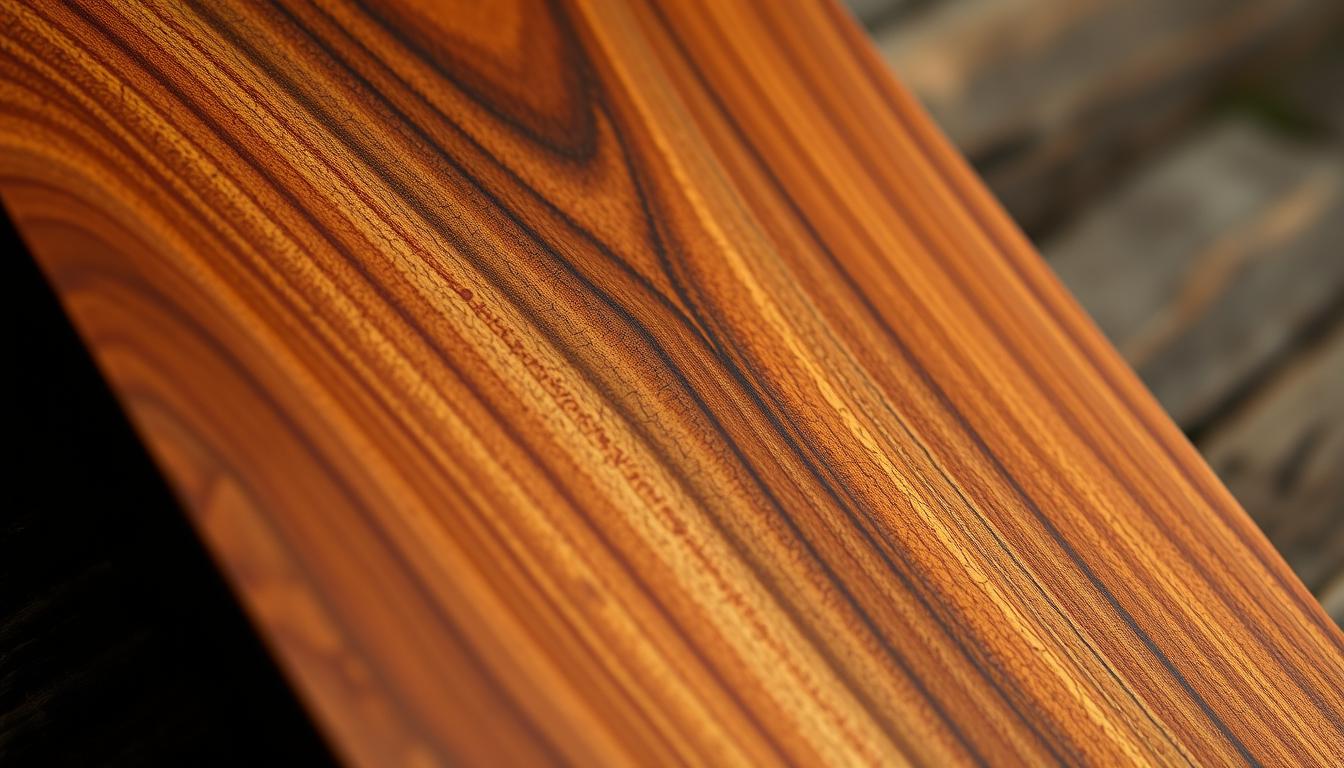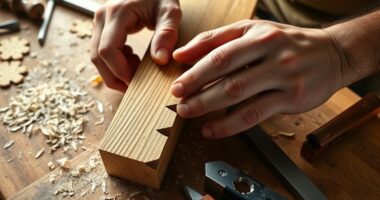Did you know that over 90% of the furniture in American homes is made from hardwoods? Yet, many woodworkers still debate the classification and usability of various species, including mulberry wood. As a relatively lesser-known option, mulberry wood properties have sparked curiosity among enthusiasts keen on maximizing their woodworking uses. This article aims to unpack the nuances of this unique species, exploring its hardwood classification, characteristics, and how you can incorporate it into your projects effectively.
Key Takeaways
- Mulberry wood offers unique properties suitable for various woodworking projects.
- Understanding its hardwood classification helps maximize your design options.
- This guide will cover essential tips and techniques for working with mulberry wood.
- Learn how historical uses contribute to its significance in woodworking.
- Discover challenges associated with mulberry wood and strategies to overcome them.
Understanding Mulberry Wood
The mulberry tree, belonging to the Morus genus, is not just admired for its delicious fruit but also for the quality of its wood types. This hardwood is often sought after in woodworking due to its unique mulberry characteristics. The most notable species include black mulberry (Morus nigra) and white mulberry (Morus alba), each offering distinct features suitable for various applications.
One reason woodworkers favor mulberry wood is its rich color spectrum, ranging from light yellow to dark brown. This versatility allows for creative opportunities in furniture and decorative items. The wood is also known for its excellent workability, making it a preferred choice for crafting bowls, custom furniture, and intricate details in art pieces.
Throughout history, mulberry wood has been valued not only for its aesthetic appeal but also for its durability. The inherent strength and unique grain patterns only add to its charm, making creations from the mulberry tree stand out in both functionality and design.

Is Mulberry Hardwood? Maximizing Your Woodworking Potential
Exploring the characteristics of mulberry wood helps you appreciate its versatility in woodworking projects. This unique hardwood offers distinct visual and functional qualities that can enhance your creations.
Characteristics of Mulberry Wood
Mulberry wood showcases a remarkable range of light to medium brown hues, which deepen over time. It features a tight grain with subtle reflective qualities, contributing to its aesthetic appeal. One of the standout traits is its relatively lightweight nature, which improves ease of handling during woodworking tasks. You will likely find it easy to sand and finish, resulting in a smooth surface that is perfect for an array of projects.
Comparison with Other Hardwoods
When you compare mulberry wood to other hardwoods, several aspects stand out. Below is a detailed table showcasing its characteristics alongside those of other popular hardwoods:
| Wood Type | Density (lbs/ft³) | Grain Pattern | Color Range |
|---|---|---|---|
| Mulberry | 35 | Tight and fine | Light to medium brown |
| Oak | 43 | Open and coarse | Light tan to medium brown |
| Walnut | 38 | Wavy and irregular | Dark chocolate brown |
| Cherry | 38 | Straight and fine | Pale pink to reddish-brown |
This comparison reveals that while mulberry is lightweight and easy to work with, other hardwoods may offer different aesthetics or structural properties. Understanding these distinctions can significantly impact your woodworking potential.
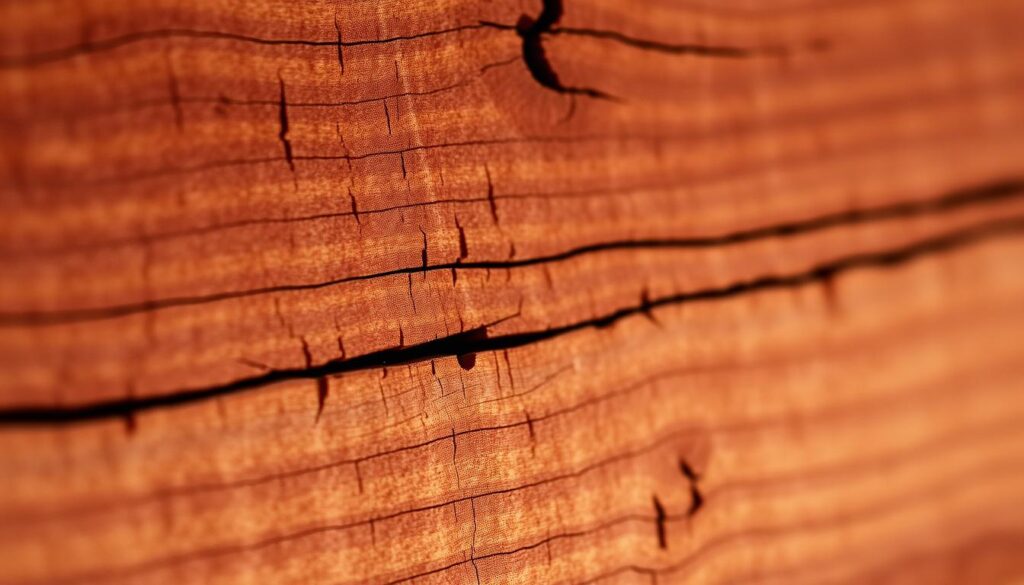
Common Uses of Mulberry in Woodworking
Mulberry wood has carved its niche in various woodworking applications, particularly in the realm of crafting furniture and creating decorative items. Its distinctive qualities make it a preferred choice for artisans looking to blend beauty and functionality in their pieces. Understanding the practical uses of this wood can inspire you to explore its potential in your own projects.
Furniture Making
The appeal of mulberry furniture lies in its rich color and durability. Craftsmen frequently employ this wood in making tables, chairs, and cabinets that stand out with elegance. Once finished, the surface reveals an attractive sheen that enhances the natural grain, making these pieces captivating focal points in any home. Whether you are creating a rustic dining table or a sleek modern chair, mulberry offers versatile wood options that cater to various aesthetics.
Small Items and Crafts
Beyond larger furniture pieces, mulberry wood is ideal for crafting furniture and smaller decorative items. Whether you are interested in unique coasters, intricate boxes, or stylish picture frames, this wood provides the quality and visual appeal necessary for standout creations. Its manageable size allows for detailed work, encouraging artisans to innovate and customize with ease.
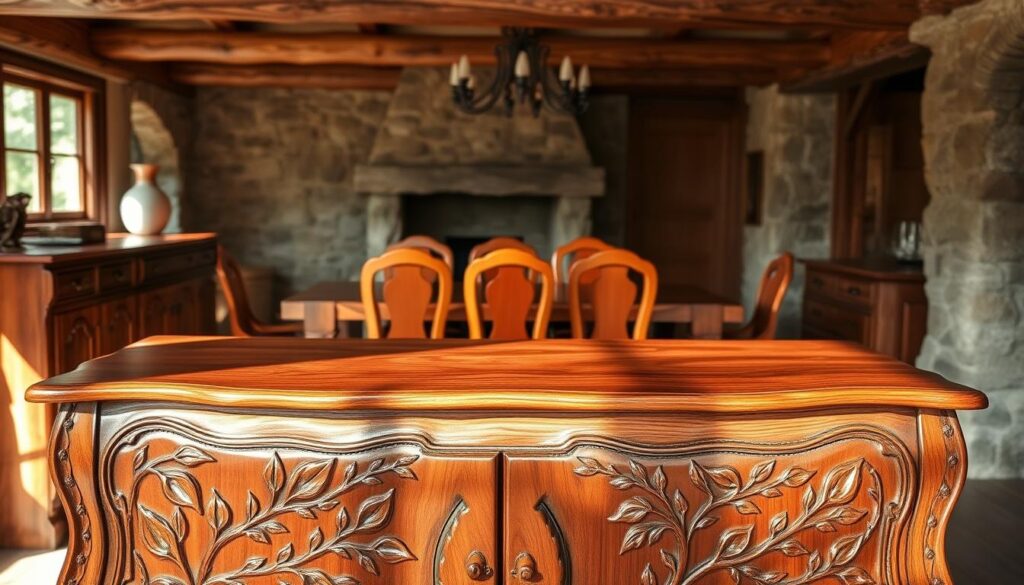
Working with Mulberry: Tips and Techniques
When embarking on a woodworking project with mulberry, preparing your workspace and gathering the right tools is vital. Using the appropriate woodworking tools can enhance your efficiency and result in a polished finish. Understanding the specific equipment for mulberry will help you work with this unique wood more effectively.
Tools and Equipment Needed
Successful projects using mulberry require a variety of tools. Essential woodworking tools include:
- Sharp chisels for precise cuts and detailing.
- Turning tools are crucial if you plan to work on a lathe.
- Bandsaw for cutting logs into manageable pieces.
- Sanding machines for achieving a smooth finish.
Choosing the right blade for your saw is important due to the unique grain patterns in mulberry. This careful selection minimizes the likelihood of tear-out during the cutting process, making your woodworking experience smoother.
Finishing Tips for Optimal Results
Finishing your mulberry pieces is essential for enhancing their natural beauty. When working with wood, consider these tips:
- Use a high-quality wood conditioner to help the finish absorb evenly.
- Choose between oil-based and water-based finishes depending on your desired look.
- Apply the finish in thin layers, allowing each to dry completely for best results.
The right finishing techniques can elevate your projects, showcasing the rich colors and unique grain patterns of mulberry. Effective preparation and attention to detail will help you achieve impressive outcomes in your woodworking endeavors.
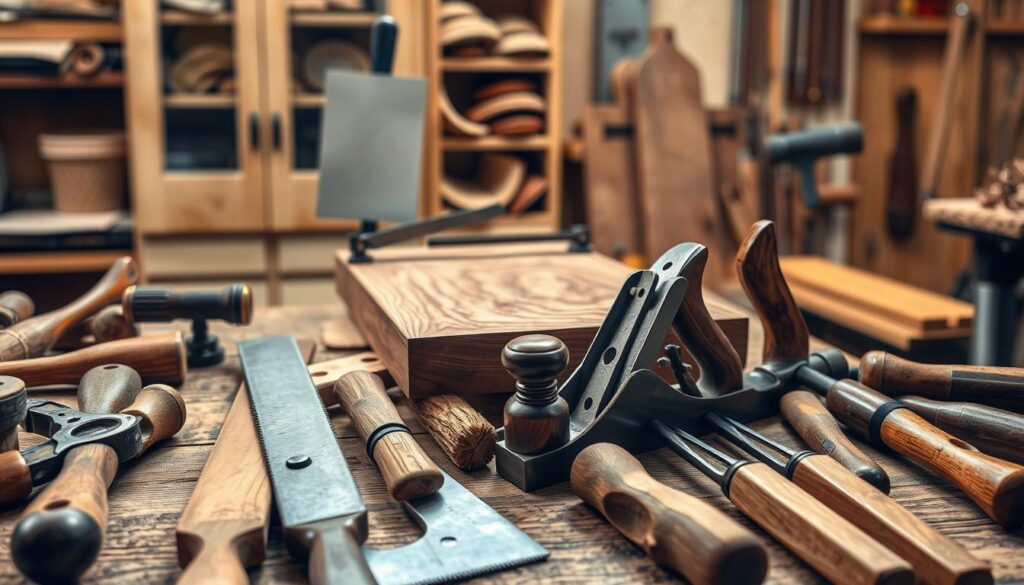
The Color and Grain of Mulberry Wood
Understanding the visual aspects of mulberry wood adds depth to its appeal for woodworking projects. The color change in mulberry wood occurs as it ages, transitioning through various shades. This natural progression not only enhances the beauty of the wood but also gives woodworkers insight into how their finished pieces may evolve over time.
Natural Color Changes Over Time
Freshly cut mulberry wood presents itself as a vibrant yellow. With exposure to light and air, this initial hue begins to shift. As time passes, the wood reveals deeper tones, evolving into light brown and ultimately achieving a rich orangish-brown. This aging wood phenomenon teaches you to appreciate the dynamic nature of mulberry hues and understand that your projects will mature and change, enhancing their character.
Unique Grain Patterns and Features
The grain of mulberry wood is another captivating aspect worth noting. You will often find intricate patterns that vary from piece to piece. These unique grains not only contribute to the aesthetic appeal but also make each item distinct. When incorporating mulberry into your work, anticipate showcasing these unique features, which can enhance the overall beauty of your creations.

Below is a detailed table showcasing the color changes as mulberry wood ages:
| Age of Wood | Color Description |
|---|---|
| Freshly cut | Bright yellow |
| 1-2 months | Light brown |
| 6 months | Orangish-brown |
| 1 year | Deep orangish-brown |
Advantages of Using Mulberry in Projects
When exploring the mulberry advantages, it’s impossible to overlook the wood’s vibrant color and unique grain patterns. These characteristics provide a distinct aesthetic appeal that can enhance various woodworking projects. Whether used for furniture or intricate crafts, mulberry wood can add sophistication and warmth to your creations.
The benefits of mulberry wood extend beyond just appearance. Another notable feature is its lightweight nature, making it easy to work with compared to heavier hardwoods. This quality is particularly advantageous for artisans who require both durability and flexibility in their designs.
In terms of woodworking advantages, mulberry wood takes finishes exceptionally well. It readily absorbs stains and treatments, allowing you to achieve your desired look with minimal effort. This responsiveness to finishing enhances the overall beauty of the final product, making it an appealing choice for woodworkers of all skill levels.
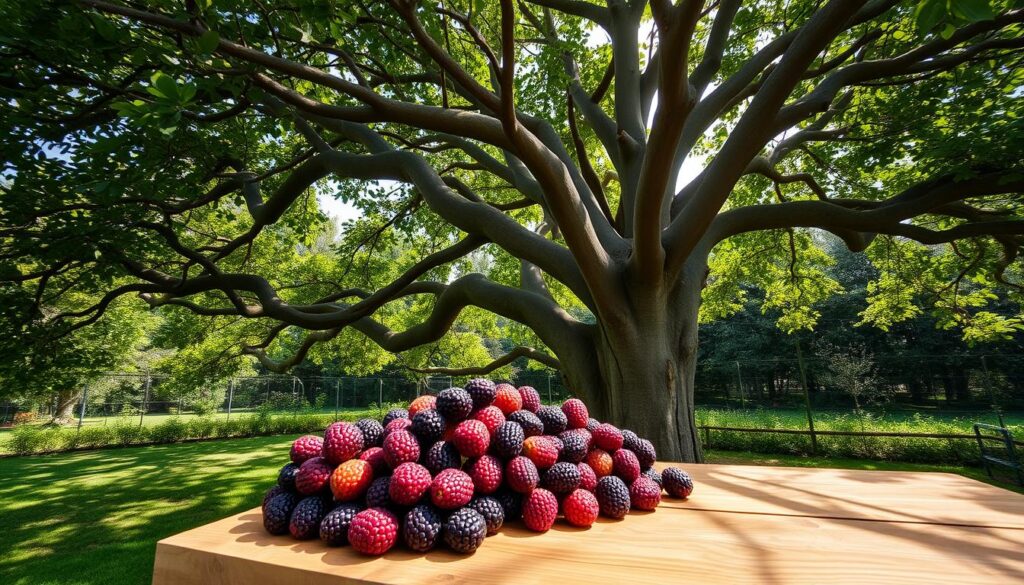
Challenges When Working with Mulberry Wood
Working with mulberry wood presents unique challenges that any woodworker should be prepared for. While this wood type is often favored for its beauty and ease of use, it can also present certain woodworking issues that need addressing. Understanding these challenges with mulberry wood will better equip you to manage and complete your projects successfully.
Common Issues and How to Overcome Them
One of the primary challenges when dealing with mulberry wood relates to its tendency to split if not handled properly. When you fasten pieces together, it is crucial to pre-drill holes for nails and screws to avoid further damaging the wood. Appreciating the difference between air-dried and green mulberry wood is vital for overcoming wood problems. Air-dried wood typically retains moisture content more evenly, reducing the likelihood of warping and cracks during the woodworking process. Below is a table summarizing common issues along with potential solutions:
| Common Issues | Solutions |
|---|---|
| Tendency to Split | Pre-drill holes for fasteners |
| Uneven Moisture Content | Use air-dried wood for consistent results |
| Difficulty in Finishing | Sand thoroughly before applying finish |
| Color Variation in Staining | Test stains on scrap pieces first |
Working with Burls and Contorted Figures
Another intriguing aspect of working with mulberry wood is its various burls and contorted figures. These beautiful patterns can add character to your projects but may introduce additional challenges. Burls can be more difficult to cut and shape due to their irregular grain patterns. Using the right tools, such as finer chisels and specialized saws, may assist you in overcoming these woodworking issues. Always remember to proceed with caution; patience will yield the best results when working with these unique pieces of mulberry wood.
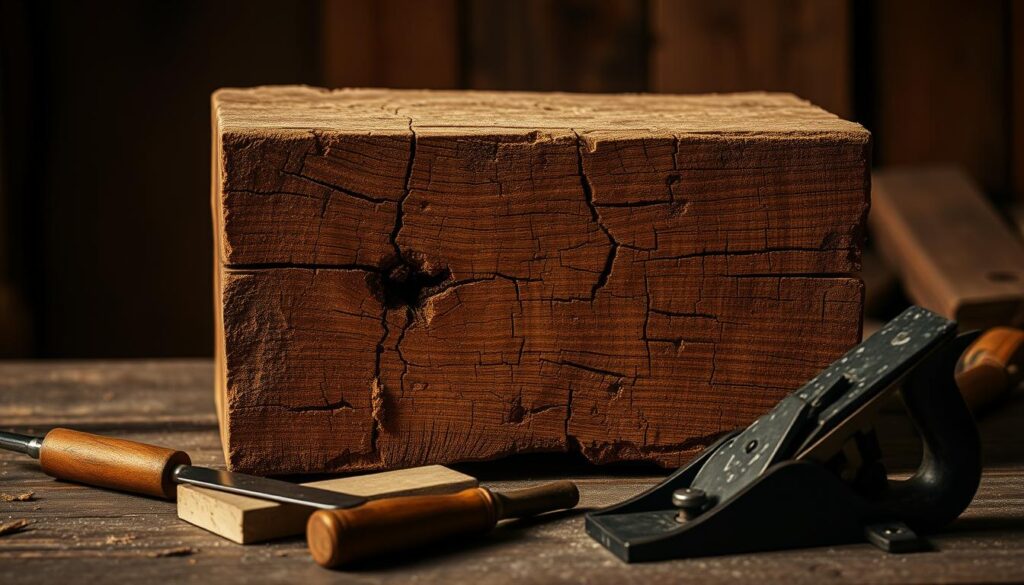
Mulberry’s Cultural Significance in Woodworking
Mulberry wood has played a vital role in various cultures, showcasing its enduring appeal and practical applications. Historically, the wood has been distinguished for its unique properties, allowing it to carve exquisite pieces that hold both function and beauty. The cultural significance of this material can be seen in its use for fine furniture and specialized ceremonial items.
Historical Uses of Mulberry Wood
Across different regions, the historical uses of mulberry highlight its versatility and beauty. This wood has been favored for crafting items that are both decorative and functional, often found in traditional households. It has been a staple in the creation of furniture that complements lifestyle and aesthetic preferences, maintaining a deep-seated connection to its woodworking heritage.
Traditional Craftsmanship in Japan
In Japan, the craftsmanship associated with mulberry is especially noteworthy. Artisans utilize this wood to create culturally significant items such as tea ceremony tools and netsuke. These creations reflect not only the high-quality craftsmanship but illustrate the rich traditions tied to mulberry. Each piece tells a story, emphasizing the cultural significance embedded in the wood and its applications.

Environmental Considerations and Mulberry Trees
Mulberry trees offer remarkable opportunities for environmental practices, particularly through the recycling of downed trees. These efforts contribute significantly to sustainable woodworking, enabling artisans to make the most out of natural resources. Instead of discarding the wood as waste, consider the versatility of recycling mulberry wood into various products that can be both beautiful and functional.
Recycling Downed Mulberry Trees
When mulberry trees fall or need to be removed, they can serve a valuable purpose rather than ending up as waste. By embracing the concept of recycling mulberry wood, you can transform this seemingly discarded material into stunning wooden items. From furniture to decorative crafts, the possibilities are endless. This approach not only minimizes waste but also helps in keeping the ecosystem balanced.
Mulberry as a Sustainable Material
Utilizing mulberry wood aligns well with sustainable woodworking principles. Its growth and harvesting methods support environmental health, making it an advantageous choice for eco-conscious woodworkers. Employing mulberry in your projects facilitates responsible resource use while highlighting the unique qualities of this remarkable wood. The commitment to sustainable practices contributes positively to the planet’s well-being, promoting a healthier environment for future generations.
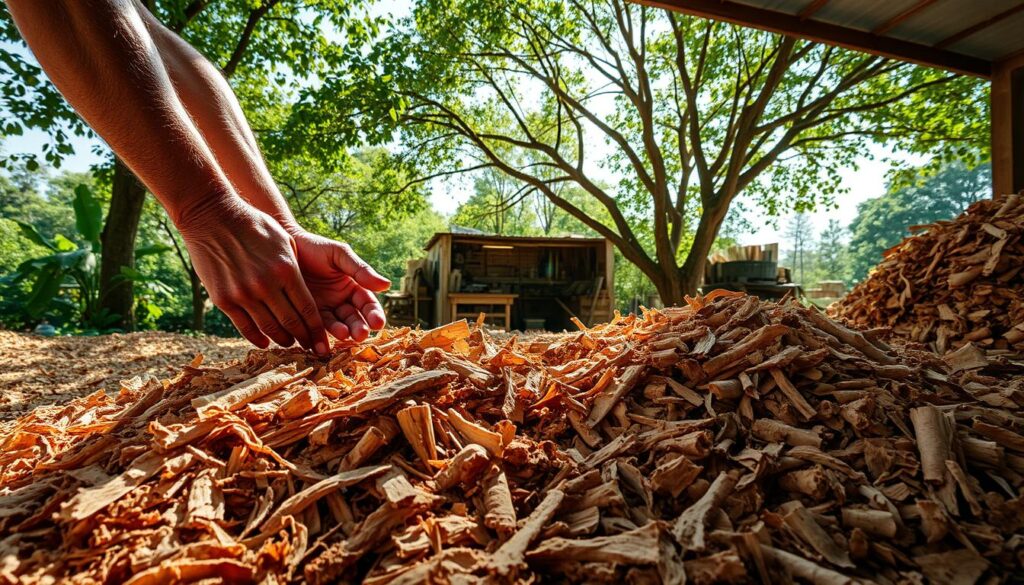
Conclusion
In summary, mulberry wood emerges as a standout choice for woodworking enthusiasts, characterized by its versatility and aesthetic appeal. Whether you’re creating stunning furniture pieces or intricate crafts, the unique properties of mulberry wood enrich your projects in a way that few other hardwoods can.
By gaining insights into its characteristics, challenges, and historical significance, you enhance your woodworking knowledge, enabling you to fully exploit the hardwood uses of mulberry. Its distinct grain patterns and colors not only elevate your creations but also connect you to a rich tradition of craftsmanship.
As you consider your next project, remember the valuable woodworking insights provided by mulberry wood. It’s an exceptional material that can undoubtedly inspire creativity and elevate your woodworking endeavors. So, embrace the possibilities that mulberry wood offers and enjoy the crafting journey ahead.
